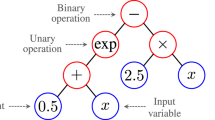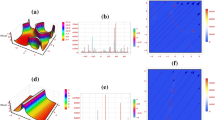Abstract
A three year record of daily fecal coliform counts in a Massachusetts water reservoir has the appearance of an irregular time series punctuated by outbursts of varying duration. The pattern is described in terms of a probabilistic model where the fluctuations in the ‘regular’ and ‘explosive’ regimes are governed by two sets of probabilities. It has been assumed that the random oscillations has a lognormal distribution, and that once an explosion threshold has been exceeded the increments or decrements in the population size have fixed probability distributions. The threshold for triggering an outburst was estimated by examining the randomness of the autocorrelation function of the record after it is filtered to eliminate peaks of progressively increasing magnitude. Once the threshold has been identified, the mean and standard deviation of the underlying lognormal distribution could be estimated directly from remains found in the record after all the peaks were removed. The probabilities of an increment and decrement during the outbursts and their relative magnitudes could also be estimated using simple formulas. These estimated parameter values were then used to generate realistic records with known threshold levels, which were subsequently used to assess the procedure’s feasibility and sensitivity.
Similar content being viewed by others
References
Brockwell, P. J. and R. A. Davis (1987). Time Series: Theory and Methods, New York: Springer-Verlang.
Brown, D. and R. Rothery (1993). Models in Biology—Mathematics, Statistics and Computing, John Wiley.
Horowitz, J., M. D. Norman and M. Peleg (1999). On modeling the irregular fluctuations in microbial counts. Crit. Rev. Food Sci. Nutr. 39, 503–517.
Murray, J. D. (1989). Mathematical Biology, Springer-Verlag.
Nussinovitch, A., Y. Curasso and M. Peleg (2000). Analysis of the fluctuating microbial counts in commercial raw milk—A case study. J. Food Prtoect. 64, 1240–1247.
Nussinovitch, A. and M. Peleg (2000). Analysis of the fluctuating patterns of microbial counts in frozen industrial food products. Food Res. Int. 33, 53–62.
Peleg, M. and J. Horowitz (2000). On estimating the probability of aperiodic outbursts of microbial poulations from their fluctuating counts. Bull. Math. Biol. 62, 17–35.
Peleg, M., A. Nussinovitch and J. Horowitz (2000). Interpretation and extraction useful information from irregular fluctuating microbial counts. J. Food Sci. 65, 740–747.
Royama, T. (1992). Analytical Population Dynamics, Chapman and Hall.
Ruelle, D. (1989). Chaotic Evolution and Strange Attractors, Cambridge: Cambridge University Press.
Ruelle, D. (1992). Deterministic chaos: the science and the fiction. Proc. R. Soc. Lond. A427, 241–247.
Schaffer, W. M. and G. L. Truty (1989). Chaos versus noise-driven dynamics, in Models in Population Biology, Vol. 20, The American Mathematical Society, pp. 77–96.
Author information
Authors and Affiliations
Corresponding author
Rights and permissions
About this article
Cite this article
Engel, R., Normand, M., Horowitz, J. et al. A model of microbial contamination of a water reservoir. Bull. Math. Biol. 63, 1005–1023 (2001). https://doi.org/10.1006/bulm.2001.0238
Received:
Accepted:
Issue Date:
DOI: https://doi.org/10.1006/bulm.2001.0238




